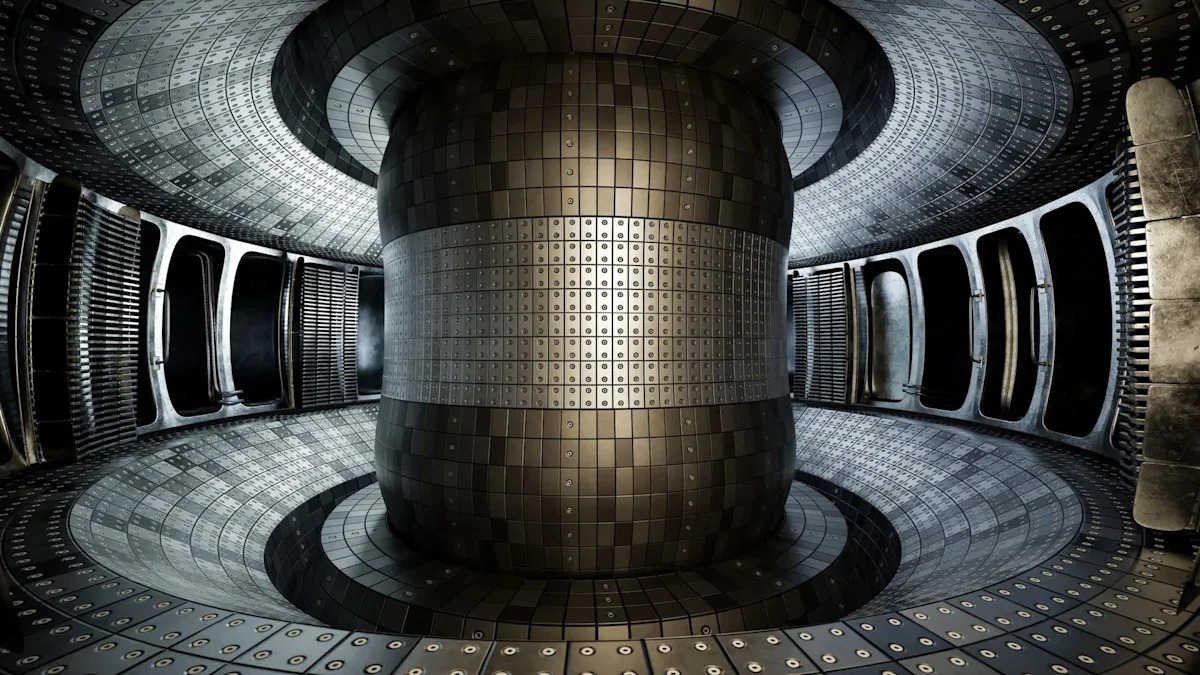
A team of researchers has designed an exhaust system that dramatically reduces the extreme heat found inside fusion reactors.
For years, scientists have pointed to nuclear fusion’s potential to provide clean and nearly limitless energy. However, one of its biggest challenges is the safe handling of the intense heat from the plasma before it hits the reactor walls.
With the race to make nuclear fusion cheaper and more practical on a mass scale, finding solutions to this challenge has become imperative.
In a study published in the journal Nature Energy, fusion researchers turned to Alternative Divertor Configurations as a possible solution while working on the Mega Ampere Spherical Tokamak-Upgrade in England, which is owned by the U.K. government.
The ADCs were designed to create a neutral gas buffer that helps protect the reactor wall.
The researchers developed the “Super-X divertor” that utilized extended “legs” of plasma compared to conventional designs. This provided more space to cool the plasma before it hits the divertor walls.
According to a press release announcing the team’s findings, this design displayed “significant benefits in controlling the fusion heat.”
James Harrison, head of MAST Upgrade Science with the United Kingdom Atomic Energy Authority, noted that the “exciting results” were the result of the collaborative effort between UKAEA, TU Eindhoven, Dutch Institute for Fundamental Energy Research, and EUROfusion researchers.
“Demonstrating that the plasma conditions in the divertors of MAST Upgrade can be controlled independently is an important advancement towards developing robust control of plasma exhaust in future machines,” Harrison said in a statement.
Unlike the burning of dirty fuels for energy, fusion doesn’t release carbon dioxide, which is one of the main drivers of rising global temperatures. As a cleaner and abundant source of energy, nuclear fusion can play a pivotal role in the reduction of fossil fuel usage and a wider adoption of renewable energy sources.
While nuclear fission is also able to provide reliable, low-carbon energy, the concern of increased radioactive nuclear waste requires proper containment and management. However, nuclear fusion doesn’t create long-lasting radioactive waste like nuclear fission, making it an attractive option, as the International Atomic Energy Agency explains.
According to Kevin Verhaegh, fusion researcher at Eindhoven University of Technology and co-author of the study, the breakthrough may greatly benefit similar projects in the future, unlocking the true potential of nuclear fusion-based energy production.
“We were able to show that even a modest, yet strategic, modification of the divertor can already offer many of the benefits of more extreme divertor geometries,” Verhaegh said.
With continued research into nuclear fusion, experts may eventually be able to reduce additional safety concerns regarding the technology.
“As such extreme geometries are more difficult to realize in a power plant, these results open new pathways to improving the design of future fusion machines,” added Verhaegh.
Join our free newsletter for weekly updates on the latest innovations improving our lives and shaping our future, and don’t miss this cool list of easy ways to help yourself while helping the planet.
Disclaimer: This news has been automatically collected from the source link above. Our website does not create, edit, or publish the content. All information, statements, and opinions expressed belong solely to the original publisher. We are not responsible or liable for the accuracy, reliability, or completeness of any news, nor for any statements, views, or claims made in the content. All rights remain with the respective source.
